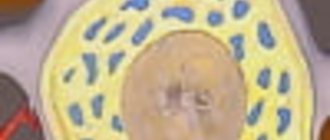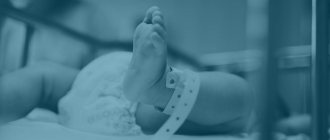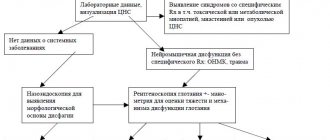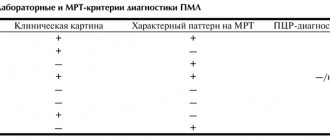How does infection occur and who is at risk?
The routes of infection with polio mainly come down to the penetration of the virus through the digestive tract - if water, food or hands have previously come into contact with contaminated substances. For example, feces of a sick person get into a pond, and then when swimming, the patient gets the virus along with the contaminated water. The causative agent of the disease is poliovirus.
You can become infected through water, food, dirty clothes, etc. At risk are:
- children under 7 years old. Poliomyelitis occurs much more often in children than in adults;
- Pregnant women;
- people with very weakened immune systems. This can be facilitated by various diseases, as well as disorders at the endocrine level, periods after operations, etc.;
- people suffering from immunodeficiencies.
The risk of infection is higher during the warm season: summer or autumn. The virus is very tenacious; in a humid environment it can live up to 4 months.
Causes of polio
Most often, children aged 3 months to 5 years suffer from polio. The innate immunity received by the child from the mother is preserved for up to 3 months. Cases of polio in people over 5 years of age are not typical, but do occur.
The source of infection is a patient with polio or a carrier of the virus in a “dormant” form. The virus is excreted in feces, and enters the body through the mouth - with water or food (milk is usually isolated as a separate product through which the infection can be transmitted). The transmission of infection involves dirty hands, toys, household items, and everything that a child can put in his mouth. The disease can be carried by flies. The infection can also spread through airborne droplets.
The incubation period of the disease ranges from 2 to 35 days (usually one to two weeks). The patient becomes contagious 2-3 days after infection. Shedding of the virus continues: by airborne droplets - for several days, with feces - up to 7 weeks.
When in contact with a sick person, the risk of infection is low (about 1%). However, it should be taken into account that the majority of the source of infection are passive carriers of the virus, which makes the threat of infection almost unpredictable.
Symptoms of polio and course of the disease
The polio virus causes the following symptoms:
- signs of intoxication: nausea, vomiting, diarrhea, rash;
- cold-like disorders: cough, runny nose, sore throat, difficulty breathing and swallowing;
- fluctuations in blood pressure, fatigue, general poor health, headache;
- in rare cases - various types of paralysis that can lead to the death of the patient.
It is important to note that in 90% of cases, polio has no symptoms and does not affect the nervous system. And in 10% of cases there are very severe forms, involving inflammation of the membranes of the brain - with serious consequences, even fatal.
The incubation period of polio is quite short - it does not exceed 5 days. In this case, recovery in the case of a mild form occurs within 3 days. However, as we have already said, there are also complex forms - they are quite rare, but extremely dangerous. In this case, treatment may last for months, years, or may be completely useless.
Are you experiencing symptoms of polio?
Only a doctor can accurately diagnose the disease. Don't delay your consultation - call
Poliomyelitis - symptoms and treatment
Poliomyelitis (polio) is a life-threatening acute infectious disease caused by the poliovirus. It mainly affects children under 5 years of age [11]. More often it occurs in an erased form, sometimes accompanied by fever, headache and vomiting.
When the virus damages the spinal cord and motor nuclei of the cranial nerves, muscles in the legs, arms, torso, or neck are paralyzed [7]. In rare cases, paralysis of the respiratory muscles develops, which causes death [11].
Etiology
Taxonomy of the pathogen:
- Domain - Viruses
- Realm - Riboviria
- Kingdom - Orthornavirae
- Type - Pisuviricota
- Class - Pisoniviricetes
- Order - Picornavirales
- Family - Picornaviruses (Picornaviridae)
- Genus - Enteroviruses
- Species - Poliovirus (Poliovirus hominis)
There are three serotypes of the virus: PV1, PV2 and PV3. Now only the first type is found in nature. It is highly contagious and can cause paralytic poliomyelitis [11].
The virus reaches 15–30 nm in diameter. It multiplies in the cytoplasm of affected cells. Contains ribonucleic acid (RNA), which transfers genetic information from the virus core to the particles that synthesize the protein.
Resistant to environmental conditions: at low temperatures it remains active for quite a long time; when frozen - up to several years; persists for several months in feces, sewage, milk and on vegetables. Does not lose activity in 50% glycerol, insensitive to alcohol. Susceptible to chlorine-containing substances, it dies instantly when boiled. Antibiotics have no effect on the virus [4][7][9].
Epidemiology
The source of infection is only humans. Moreover, for one case of illness with a pronounced clinical picture, there are from 100 to 1000 cases of carriage - isolation of poliovirus without complaints. Due to the high natural susceptibility to the virus, the carrier is a threat to others [4][7].
How is polio transmitted?
The mechanism of transmission of infection is fecal-oral. It is realized through water, food and household transmission routes, i.e. through contaminated hands, food and water. Sometimes the virus is transmitted by airborne droplets and airborne dust.
A person becomes infectious even before the onset of symptoms: the virus appears in nasopharyngeal secretions 36 hours after infection, and in feces three days later.
Most viral particles are released in the first week of illness. From the nasopharynx the virus enters the environment within seven days, from the intestines - up to 42 days.
Immunity after polio is type-specific: repeated cases of polio caused by other types of virus are possible. If a mother has developed immunity to poliovirus during pregnancy, her antibodies are passed on to the baby and persist for 6–12 months.
Prevalence
Until the 50s of the twentieth century, in the pre-vaccination period, polio was found in more than a hundred countries around the world, but thanks to mass immunization, the number of endemic countries in 2015 was reduced to two - Afghanistan and Pakistan. If in 1988, 350 thousand cases of infection with wild poliovirus were registered in the world, then in 2021 the number of infections has decreased to 33 cases [11].
However, the incidence has begun to increase again: in 2021, 176 cases of polio have already been identified worldwide. In 2021, the disease was discovered not only in Afghanistan and Pakistan, but also in African countries [1].
The last cases of polio in Russia were identified in 1996 in the Chechen Republic. Since 1992, vaccination has not been carried out in this region, which caused the spread of the infection, but the outbreak of the disease was extinguished.
In 2002, our country was awarded the status of a polio-free territory. According to Rospotrebnadzor data for 2021, no cases of polio caused by wild poliovirus have been registered in Russia [4].
In addition to the wild virus that circulates in the natural environment, it is extremely rare that polio can be caused by live, weakened strains of the virus that are included in the oral vaccine. This happens in one case out of every 2.7 million first vaccine doses. Most often, infection is associated with severe immune disorders [4][10][15].
Several cases of vaccine-induced polio have been reported in countries in Africa, the Eastern Mediterranean, Southeast Asia, and the Western Pacific [12].
How the disease is treated in Moscow
Treatment of polio is carried out in an infectious diseases hospital and involves an integrated approach, including:
- strict bed rest. The patient should remain calm, in a favorable environment;
- protection of paralyzed muscles. For this purpose, special splints can be applied;
- physiotherapy. This includes physical therapy, swimming in the pool under the supervision of a trainer, and massage. This also includes electrical stimulation, paraffin applications, UHF therapy and much more. The procedures are aimed at stabilizing the nervous system, helping paralyzed muscles;
- Ventilation Clinical guidelines for polio also suggest major life-sustaining interventions. The use of a mechanical ventilation device is indicated for patients whose paralysis has affected the respiratory system, and therefore threatens respiratory arrest;
- use of special medications.
It is very important that a polio patient be closely monitored, especially when the disease is progressing or not showing significant improvement.
Prevention of polio
The main preventive measure is vaccination of children, which is carried out at an early age and then again. There is a special vaccination calendar, on the basis of which pediatricians recommend undergoing this procedure. When vaccinated correctly, lifelong immunity and resistance to poliovirus are developed.
If we talk about the prevention of polio at the household level, it means:
- refusal to swim in dirty bodies of water that are not suitable for this;
- compliance with personal hygiene rules;
- refusal of potentially dangerous products. In this sense, raw milk is undesirable - a pathogen is often found in it;
- Quarantine measures if a child with a disease is detected in a children's group. At the same time, all objects and things are processed and disinfected.
Now polio is quite rare - this is due to centralized vaccination, thanks to which children from an early age develop immunity to the polio virus, and therefore calmly tolerate contact with it.
Vaccination against polio
Vaccination provides reliable and long-lasting protection against polio. Today, doctors can use several types of vaccines:
- inactivated vaccine (for example, “Polimilex”);
- live vaccine (“BiVac polio”);
- combination vaccine (“Pentaxim”).
The first vaccination against polio is given to children at three months of age, and the second vaccination is given at 4.5 months. Children are most often given an inactivated vaccine, and revaccination is carried out with an oral polio vaccine at one and a half years, at 20 months and at 14 years. Polio vaccines are compatible with other drugs from the vaccination schedule, except for BCG and BCG-m vaccines. They have virtually no side effects. In rare cases, allergic reactions occur.
Contraindications for vaccination are neurological disorders identified after previous vaccination, as well as the presence of malignant neoplasms. A contraindication to the inactivated polio vaccine may be hypersensitivity to its individual components.
Parents can protect their children from the 17 most dangerous infectious diseases. Here is their list:
- Tuberculosis
- Viral hepatitis B
- Rotavirus infection
- Pneumococcal infection
- Whooping cough
- Diphtheria
- Tetanus
- Haemophilus influenzae infection
- Measles
- Rubella
- Parotitis
- Meningococcal infection
- Viral hepatitis A
- Chicken pox
- Flu
- Human papillomavirus
- Calendar of children's preventive vaccinations
Questions and answers on the topic of polio
Is it necessary to get the OPV vaccine?
Parents have the opportunity to refuse such vaccination - they can write a written refusal and not undergo this procedure. However, doctors warn against such a decision: remember that if 10% of children get sick, the consequences will be irreversible, and for some children such a refusal will cost their lives. Currently, OPV vaccination is the only way to be 100% protected against the polio pathogen.
How is the polio vaccine given?
The vaccination is done twice, starting from the age of three months. The injection is given intramuscularly and contains the virus killed by formaldehyde.
How effective is vaccination against this disease?
Since the active fight against polio (1988), thanks to vaccination, it has been possible to reduce the number of cases from 350 thousand people per year to 359 cases (in 2014). These data speak for themselves: after receiving the vaccine, the disease becomes harmless and no longer threatens the person.









